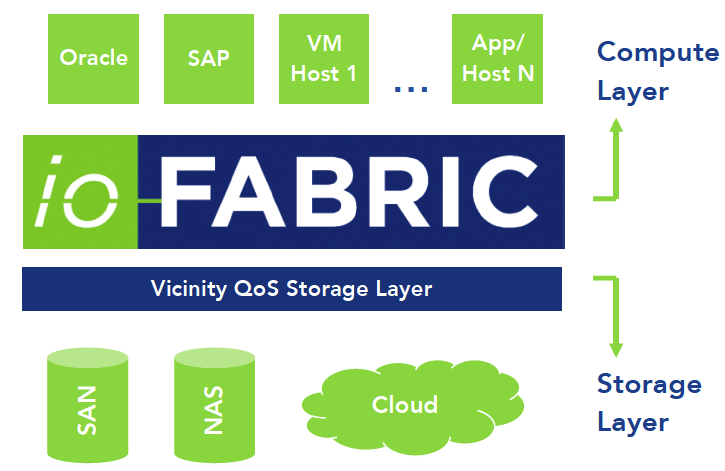Start-Up Profile: ioFABRIC
In software to discover, profile and unify DRAM, flash, and HDDs across DAS, SAN, NAS and cloud storage
By Jean Jacques Maleval | November 17, 2015 at 3:19 pmCompany
ioFABRIC Inc.
HQs
Toronto, ONT, Canada
Date founded
October 2013
Financial funding
From Real Ventures and private investors, amount not disclosed
Founders and main executives Steven Lamb, co-founder and CEO, forged himself as a storage expert with server-side caching at Nevex Virtual Technologies and now with ioFABRIC. His first company, Border Network Technologies, became the second largest firewall vendor worldwide. He also worked for INEX and Nevex Software.
Steven Lamb, co-founder and CEO, forged himself as a storage expert with server-side caching at Nevex Virtual Technologies and now with ioFABRIC. His first company, Border Network Technologies, became the second largest firewall vendor worldwide. He also worked for INEX and Nevex Software.
Rayan Zachariassen, co-founder and CTO, founded Uunet Canada that became Canada’s first commercial internet service provider, purchased in 1988 by Uunet Technologies, the world’s largest ISP. He also co-founded Border Network Technologies with Lamb.
Andrew Flint, VP marketing, was a co-founder of Nevex Software, and has over 20 years of marketing and product management experience.
Nigel Miller, VP business development, was a member of the management staff at Nevex Software.
Number of employees
20
Technology
Vicinity is a software that delivers QoS-driven storage automation that maintains storage service levels based on performance, capacity and data protection requirements. It features storage automation that unifies existing storage resources, centralizes storage management, simplifies the deployment of flash, and improves storage utilization-delivering application-specific QoS levels.
All of compute, storage and virtualization is taken care of and managed with one central dashboard. Vicinity manages all workloads and makes the infrastructure invisible so users can focus on productivity knowing data is secure and accessible on existing hardware.
Vicinity increases storage administrator efficiency by automating complex and time consuming tasks such as storage provisioning, data migration, capacity planning, performance monitoring, backups, tuning, load balancing, and zoning, all while reducing downtime. Further OPEX savings are delivered through reduced power, cooling, maintenance, repair, and licensing requirements, as well as extended depreciation schedules.
Automate Storage
Vicinity discovers, profiles and unifies DRAM, flash, and HDDs across direct-attached, SAN, NAS, and cloud storage. Without manual intervention, it monitors and automatically moves data, adapting in real-time as demands and workloads change.
Deliver Application-Specific QoS
Through a centralized dashboard, administrators define QoS policies for individual applications or groups of applications. These policies include performance (IO/s, latency, bandwidth), capacity, and data protection levels. Vicinity QoS enforcement places active data on high-performance media for fast access, and stale data onto less expensive, higher-capacity media.
Utilize existing and future storage investments
By unifying diverse storage resources and managing them automatically, Vicinity simplifies management and frees up space on both capacity storage and high-performance media. This extends the life of storage investments – as well as their utilization – gaining additional storage. Adding new storage-either for capacity or performance-is seamless due to auto-migration and intelligent data placement. Vicinity optimizes the use of new assets, deploying across multiple applications, delivering either performance or capacity as required.
Here are their features.
Automation and Orchestration
- Management: Centralized dashboard, CLI, and API control allows centralized monitoring and management of all storage resources, including capacity, performance and QoS settings.
- Storage Pooling : Discover, profile, and pool capacity and performance of DRAM, DAS, and any remote storage, including SAN, NAS, and cloud.
- Deployment: Deploy as a physical appliance, virtual appliance, or onto the application server.
Performance
- Intelligent Data Placement: QoS targets use algorithms to place active data on performance media near compute and stale data on appropriate capacity media.
- QoS: Real-time setting and enforcement of latency, bandwidth, and performance over various workloads. QoS settings include minimum/maximum, target, and burst for IO/s, latency, and bandwidth, as well as replication and data placement policies.
- Scaling: Performance scales independently of capacity as nodes or media are added separately; scales up by adding more CPUs, network cards, media. Scales out by adding more nodes.
Capacity
- Thin Provisioning: Physical space presented to the servers appears as the full provisioned capacity; while nothing is dedicated until actual write operations occur.
- Elastic Storage: On-demand provisioning
Data Protection
- Snapshots and Clones: Instant point in time read-only copies or writeable copies
- Dynamic Replicas: Automatically balances, moves, or replicates data to satisfy QoS.
Released date
Vicinity is available in controlled release now with availability in 1Q016 and licensed by capacity under management.
Target market
From enterprise to small and mid-size organizations.
Main competitors
EMC, Hedvig, Primary Data













 Subscribe to our free daily newsletter
Subscribe to our free daily newsletter
